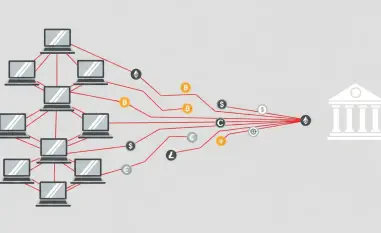Imagine a cyberattack so insidious that it strikes before a computer even has a chance to load its operating system, locking users out of their own systems with no warning. This is the chilling reality of UEFI ransomware, exemplified by the newly discovered HybridPetya, a malicious strain that infiltrates the very foundation of modern devices through vulnerabilities in Secure Boot. In today’s cybersecurity landscape, where threats evolve at an alarming pace, understanding this trend is paramount. UEFI-targeted attacks exploit critical firmware components, rendering traditional defenses powerless and exposing organizations to unprecedented risks. This analysis delves into the emergence of HybridPetya, dissects its exploitation of Secure Boot flaws, explores real-world implications, incorporates expert insights, predicts future developments, and offers key takeaways for navigating this stealthy menace.
The Rise of UEFI Ransomware: HybridPetya in Focus
Evolution and Surge of UEFI Threats
UEFI-targeted malware has seen a marked increase in prevalence, signaling a troubling shift in cybercriminal tactics. HybridPetya stands as the fourth publicly documented bootkit capable of bypassing Secure Boot, joining the ranks of notorious threats like BlackLotus, BootKitty, and others. Reports from cybersecurity firms such as ESET highlight a growing trend of firmware-level attacks, with HybridPetya’s presence first noted on VirusTotal earlier this year, underscoring the persistent interest in exploiting low-level system environments.
The data paints a stark picture of escalation. As attackers refine their methods to target UEFI, the successor to traditional BIOS, they gain access to high-privilege layers that operate before any antivirus or endpoint protection can engage. This surge reflects a strategic pivot toward stealth and persistence, challenging the cybersecurity community to rethink defense mechanisms at the most fundamental level of computing architecture.
This trend is not merely a theoretical concern but a documented reality with multiple instances of Secure Boot bypasses over recent years. The increasing sophistication of these threats suggests that UEFI attacks are no longer niche experiments but a mainstream vector for ransomware deployment, demanding urgent attention from vendors and security professionals alike.
Technical Dissection of HybridPetya’s Attack Strategy
HybridPetya operates with chilling precision, exploiting a specific vulnerability, CVE-2024-7344, within the Howyar Reloader UEFI application to sidestep Secure Boot protections. This flaw allows the ransomware to install a malicious EFI application on the system partition, enabling execution before the operating system loads. Such early-stage intervention ensures that conventional security tools remain oblivious to the infection until it’s too late.
The ransomware comprises two core components: a bootkit and an installer. The bootkit handles the encryption of the Master File Table (MFT) on NTFS partitions using the Salsa20 algorithm, while tracking progress with status flags and counter files. Meanwhile, the installer deploys the malicious payload, manipulates bootloader settings to induce system crashes, and ensures persistence across reboots, often disguising its activity with deceptive CHKDSK error messages to mislead users.
This intricate design showcases HybridPetya’s advanced engineering, as it not only locks critical data but also presents a facade of system repair to mask its true intent. By focusing on financial gain—demanding a ransom of $1,000 in Bitcoin—the malware balances destruction with a potential decryption pathway, marking a calculated evolution from purely disruptive predecessors like NotPetya to a profit-driven model.
Expert Perspectives on UEFI Ransomware Challenges
Cybersecurity specialists at ESET, who first identified HybridPetya, emphasize the unique dangers posed by UEFI as an attack vector. Given its position in the boot process, UEFI offers attackers unparalleled access to system resources, making infections extraordinarily difficult to detect or mitigate. This high-privilege environment poses a significant hurdle for traditional security solutions, which often operate at the operating system level and lack visibility into firmware activities.
Renowned researchers such as Aleksandra “Hasherezade” Doniec and Kazuki Matsuo, speaking at industry events like Black Hat this year, have further illuminated the risks tied to Secure Boot vulnerabilities. Their work underscores how flaws in UEFI implementations can be weaponized to compromise entire systems, urging a reevaluation of trust models in hardware security. Their insights reveal a consensus that firmware attacks are not isolated incidents but part of a systemic challenge requiring comprehensive solutions.
These expert analyses also point to the broader implications for industries dependent on secure computing. As UEFI threats grow, the gap between attacker innovation and defensive capabilities widens, necessitating collaboration between hardware vendors, software developers, and security teams to address vulnerabilities at the root. Such perspectives highlight the urgency of adapting to a landscape where the first line of defense is increasingly under siege.
Future Implications of UEFI-Targeted Ransomware
Looking ahead, UEFI malware could evolve into even more autonomous forms, such as “pure-BIOS” approaches like Shade BIOS, which operate independently of operating system protections. These methods, capable of retaining control in memory post-boot, could render all conventional safeguards obsolete, posing a dire threat to critical infrastructure and enterprise environments reliant on system integrity.
While these developments present significant challenges, they also drive positive advancements in firmware security. The persistence and stealth of threats like HybridPetya push vendors to prioritize robust patches and updates, as evidenced by Microsoft’s response to CVE-2024-7344 with a critical fix released earlier this year. Such responses, though reactive, signal a growing awareness of the need to fortify UEFI environments against sophisticated adversaries.
However, the flip side reveals darker possibilities, including heightened ransomware monetization tactics. As attackers refine their ability to exploit firmware vulnerabilities, industries may face escalating demands and more complex extortion schemes. Balancing these risks with proactive innovation will be crucial for maintaining trust in secure computing, especially as UEFI-targeted threats continue to test the boundaries of cybersecurity resilience over the coming years.
Conclusion: Navigating the UEFI Ransomware Landscape
Reflecting on the emergence of HybridPetya, its exploitation of Secure Boot through CVE-2024-7344 stood as a stark reminder of the vulnerabilities lurking in firmware environments. Its role in the broader wave of UEFI ransomware underscored a pivotal shift in cybercrime, where financial gain drove attackers to target the deepest layers of system architecture. The sophistication of such threats, coupled with their ability to evade traditional defenses, marked a critical juncture in the battle for digital security.
Moving forward, actionable steps emerged as essential to counter this evolving menace. Organizations need to prioritize UEFI security by implementing firmware integrity monitoring and ensuring timely application of vendor patches. Collaboration across sectors to share threat intelligence and develop standardized protections became a vital consideration. By staying ahead of these stealthy attacks, the cybersecurity community can transform a daunting challenge into an opportunity for stronger, more resilient systems.













